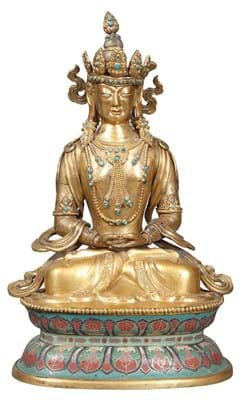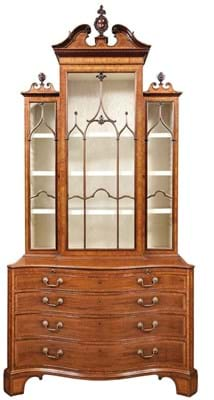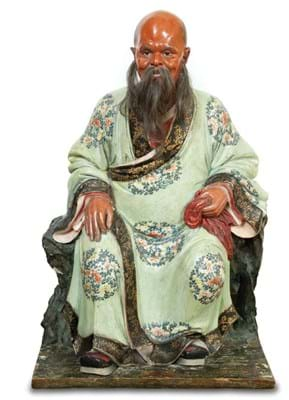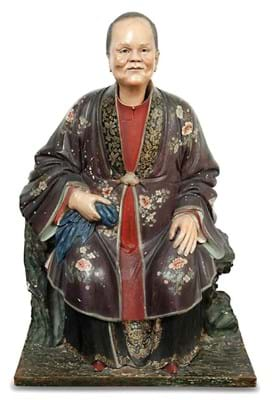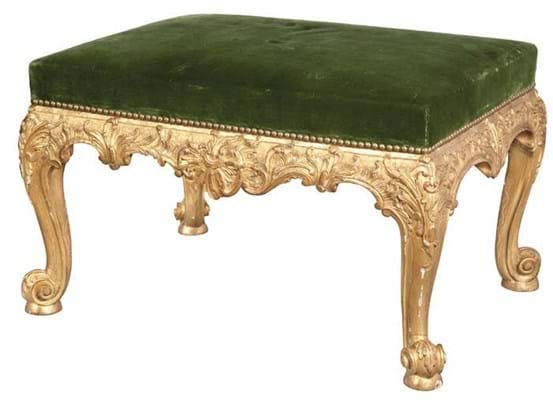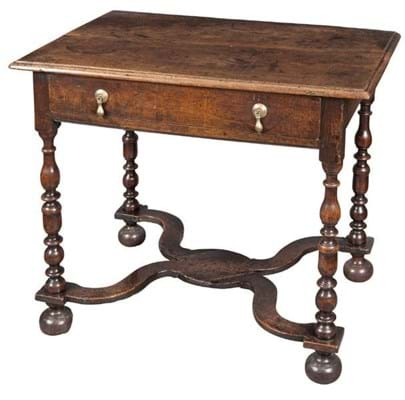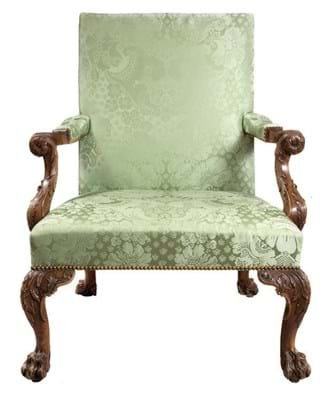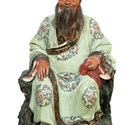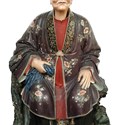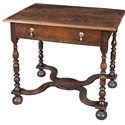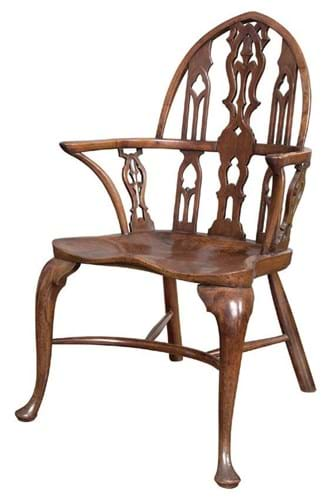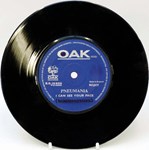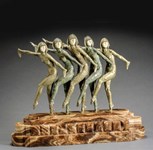The late Noel and Harriette Levine were well-known patrons of the arts and museum donors (including the bequest of their photograph collection to the Israel Museum in Jerusalem). Harriette, a talented interior designer, was the driving force behind the collecting and decorating of their homes.
On offer in this January 17 auction were contents that furnished both their elegant Park Avenue apartment and country house in Bedford, NY.
It was a selection that ranged from early 17th century oak, English embroideries and elegant Georgian furniture from across the 18th century to English silver, Chinese decorative ceramics and English pottery.
London and NY buyers
The Levines appear to have done most of their collecting in the 1980s and ‘90s, although Harriette was making purchases up to the mid 2000s. They were customers of the major dealers and antiques fairs on both sides of the Atlantic. Much of their buying was done through names in the London and New York trade such as Stair and Co, Mallett, Partridge and Jeremy.
Doyle’s director of furniture and decorative arts Peter Lang, who knew the Levines for around 20 years, noted: “They were friends with them so when they came to New York, the Levines would have those dealers to dinner. They loved entertaining.”
The provenances in their collection shows Harriette bought from dealers and at the major salerooms. “She loved buying at auction – she bid herself on the phone,” added Lang.
Some of the Levines’ acquisitions came from known collections and had earlier provenances to English country houses.
Classic 18th century English furniture is not in the vanguard of current collecting tastes so accordingly Doyle had set conservative estimates to reflect this change and that, as a deceased estate, the material was there to be sold.
The sale was also deliberately timed to coincide with the Winter Antiques Show and the many people that are in Manhattan at this time of the year. Lang said that it had the desired effect in increasing footfall, with a good attendance at the viewing and auction and a fair amount of phone bidding.
Another feature, he added, was the interest fom a number of designers – “young designers from New York and California. It was rather encouraging frankly. I think it was the simple things that were appealing to them.”
The vast majority, 90% by volume, found buyers, although prices were, in many cases, on the lower side of expectations – confirmation that this was not an event where everything was going to make a profit on the original purchase price. Not, of course, that it alters any intrinsic qualities of what was on offer.
Strong suit
What did prove to be the strong suit at this event (and is also in line with current trends), was the small element of Asian material in the Levines’ collection. This ended up providing the two highest prices of the day and several of the other results that were well over estimate.
The day’s best-seller was a Chinese gilt bronze figure that was slumbering away in the catalogue without an illustration and with a three-figure estimate. The piece in question was an 11¼in (28.5cm) high Asian gilt bronze Buddhist figure of a seated Tara, the deity shown wearing an elaborate headdress and set on an enamelled base.
This had been dated to the 19th century and guided at just $600-800, but it attracted the attention of several prospective purchasers, including some determined phone bidders. It sold for $150,000 (£107,140).
Armchairs and figures
Two lots came in at $130,000 (£92,860). One was a pair of Georgian walnut armchairs with a country house provenance discussed below. The other was a Asian lot: a pair of 21in (53cm) high Chinese export decorative nodding head figures of seated man and woman dated to the 18th-early 19th century.
These had come up for auction at Piasa in Paris back in 1999, but the Levines had acquired them from the London dealer Jeremy. Guided conservatively at $40,000-60,000, they more than doubled that level when selling to an American bidder.
Other Asian lots that surpassed Doyle’s predictions included two pieces of lacquer furniture.
A 4ft 2in (1.3m) wide Qing dynasty black and polychrome lacquer table decorated with a landscape to the top and set on an openwork apron realised $27,500 (£19,640).
A 3ft 3in (99cm) wide cabinet in coromandel lacquer decorated with landscapes and enclosing a similarly fitted interior on a Continental giltwood stand was carried off by a European buyer at $55,000 (£39,285).
The other $130,000 bid secured what had originally been billed as the sale’s potential best-seller, a pair of George II walnut library armchairs with a notable country house provenance.
They are thought to have almost certainly been commissioned by Sir Philip Yorke (1690-1764), Baron Hardwicke of Hardwicke, Gloucestershire, and Earl of Hardwicke and Baron Royston, as part of the larger suite of 10 chairs and two pairs of sofas. This was intended for the newly created Long Gallery at his seat, Wimpole Hall, Cambridgeshire where it remained until 1930.
Doyle had guided them at $250,000-350,000 (only around half the premium-inclusive $520,000 Harriette had paid for them in Sotheby’s auction of the collection of Mr and Mrs Martin Gersh in 2006). Nonetheless, even that proved more than the room was prepared to pay.
Gillows details
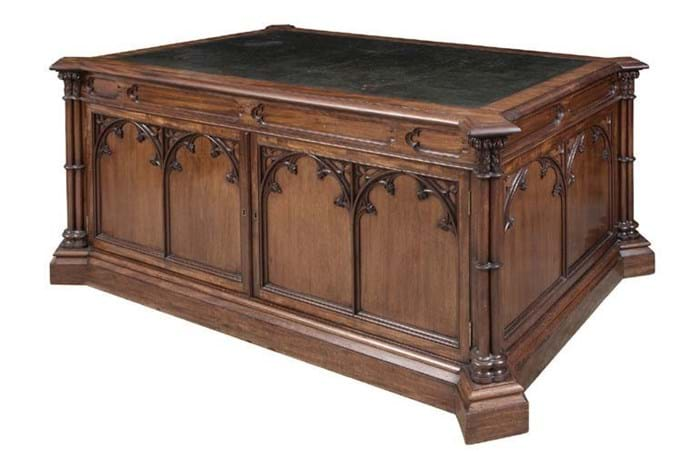
A Gillows carved mahogany library table of c.1829 from Norton Hall, Northamptonshire, sold for $45,000 (£32,140).
Selling more in line with Doyle’s expectations was an imposing and finely carved mahogany library desk with gothic detailing made by Gillows of Lancaster c.1829, which had a provenance to Beriah Botfield (1807-63) of Norton Hall, Northamptonshire.
This measured 5ft 5in (1.65m) wide and has doors opening to reveal numerous shelves and smaller locked drawers, one of which bears the Gillows’ stamp. The Levines acquired this in 1998 from Partridge Fine Art. Last month, it realised $45,000 (£32,140).
Lang admitted to some surprise about the lack of demand for an 18th century inlaid mahogany china cabinet that Doyle had catalogued as in the manner of Thomas Chippendale, and felt had quality and characteristics suggesting a possible connection to the famous cabinetmaker’s workshop. The 8ft 6in (1.6m) cabinet got away at $65,000 (£46,430) against an estimate of $100,000-200,000.
“The china cabinet in the dining room was beautiful. In the old days that would have sold for hundreds of thousands of dollars, I think,” said Lang. “I was surprised it did not go for more; it was such beautiful quality, in good condition and it came from Jeremy.”
Lang speculated that perhaps the only reason it didn’t do better was “it was made for a bedroom, so the proportions of it were rather small and it looked smaller than people expected”.
Country house opener
A high take-up emerged for the contents of the Levines’ country house which opened the sale. Virtually all the pieces found buyers.
This offered prospective purchasers a good selection of affordable English vernacular pieces, such as the pair of matched 18th century Windsor Gothic armchairs in yew, beech and elm which realised $5500 (£3930) and a 2ft 8in (81cm) wide 17th century walnut side table set on turned legs supported by an X-shaped stretcher that came in at $4000 (£2860).
Lang felt this was probably down to the broader appeal today of these late 17th century vernacular pieces: “There is a simplicity to them that makes them fit into contemporary houses.”
Doyle will be selling jewellery from the Levine collection in sales on February 21 and April 24.
£1 = $1.40


